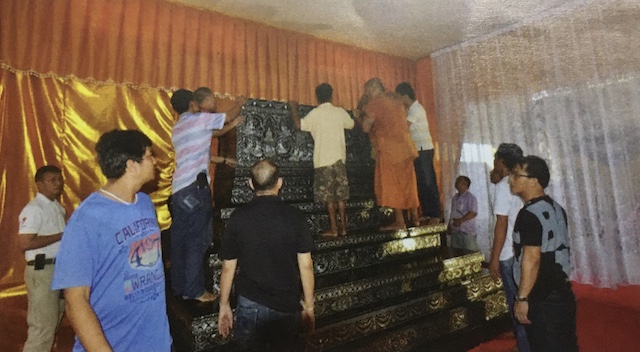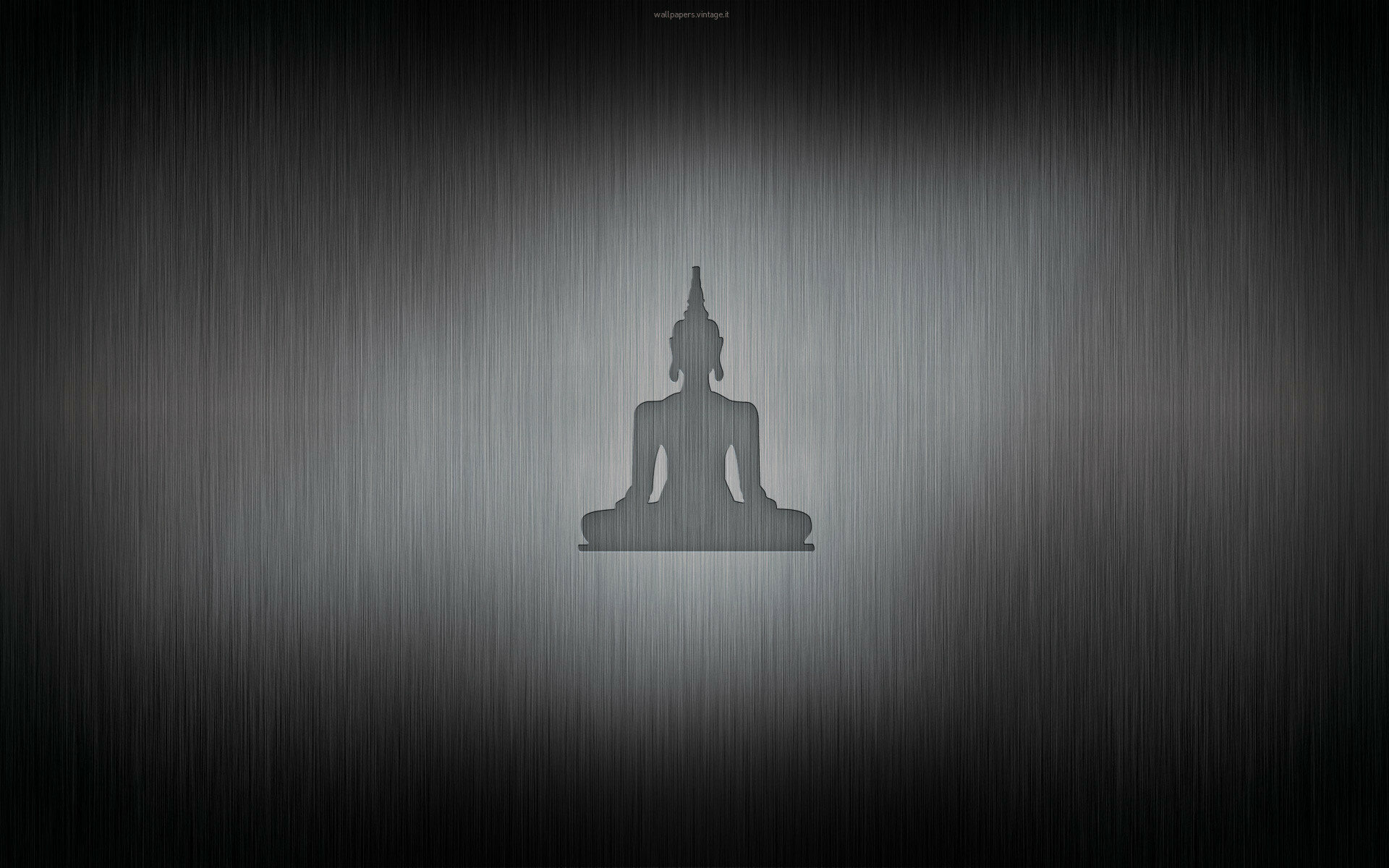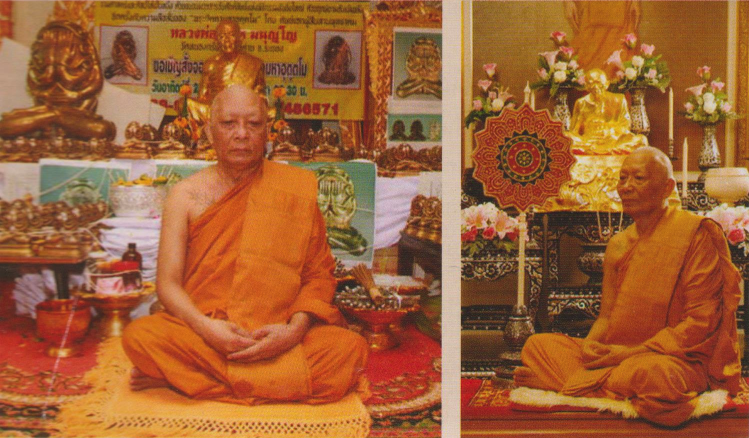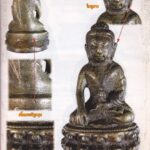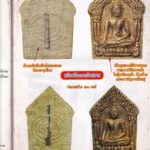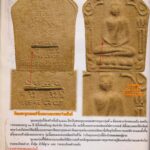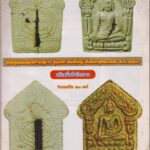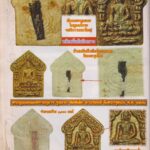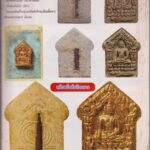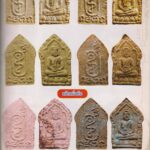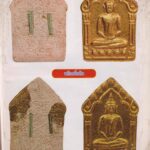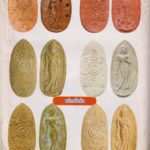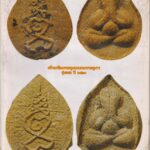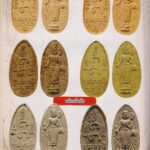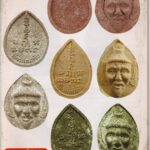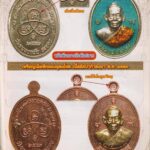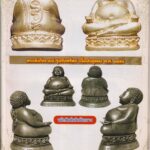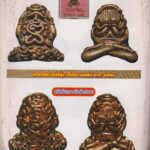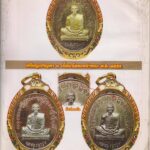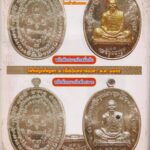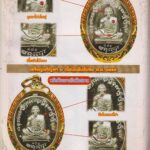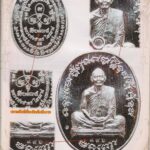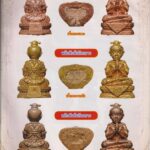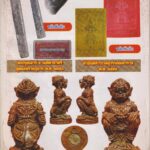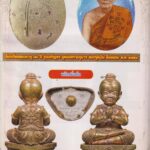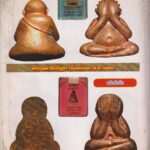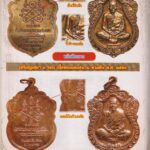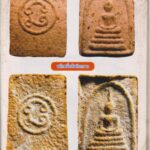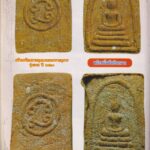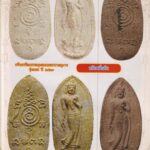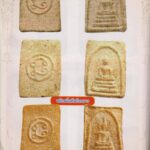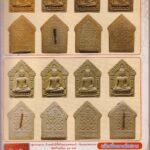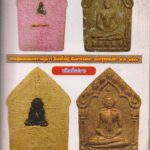The Master of Wat Nong Grub: The Life, Legacy, and Sacred Pantheon of Luang Por Sākorn Manūññō
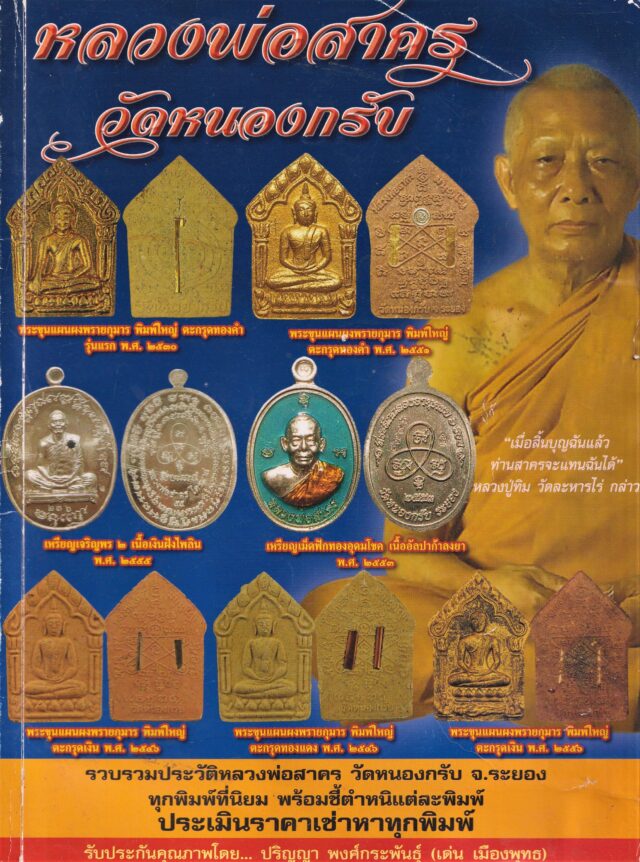
I. Introduction: The Heir to a Legendary Lineage
In the contemporary history of Thai Buddhist masters and the sacred arts of amulet creation, few figures command as much reverence as Phra Khrū Manūññadhammavat (พระครูมนูญธรรมวัตร), known universally as Lūang Phòr Sākorn Manūññō (หลวงพ่อสาคร มนูญโญ, 1938-2013 A.D.). As the erstwhile abbot of Wat Nong Gràp (วัดหนองกรับ) in Bâan Khâai District, Rayong Province, his name is inextricably linked to the preservation and continuation of one of the most potent esoteric lineages of the modern era: that of his mentor, the legendary Lūang Pù Thim Isarikō (หลวงปู่ทิม อิสริโก) of Wat Lahǎan Râi.
Lūang Phòr Sākorn was not merely a disciple; he was the anointed heir, the lûuksìt ēk (ศิษย์เอก) or prime apprentice, entrusted with the complete transmission of Lūang Pù Thim’s formidable Wichā (วิชา, esoteric knowledge). This inheritance included the arcane science behind the creation of the most famous and powerful spiritual substance in the Thai amulet world: Phǒng Phrāi Kumāan (ผงพรายกุมาร), a necromantic powder of unparalleled efficacy. The sacred objects he consecrated are, therefore, not just artifacts of faith but are considered direct continuations of the spiritual power and compassionate intent of his revered teacher.
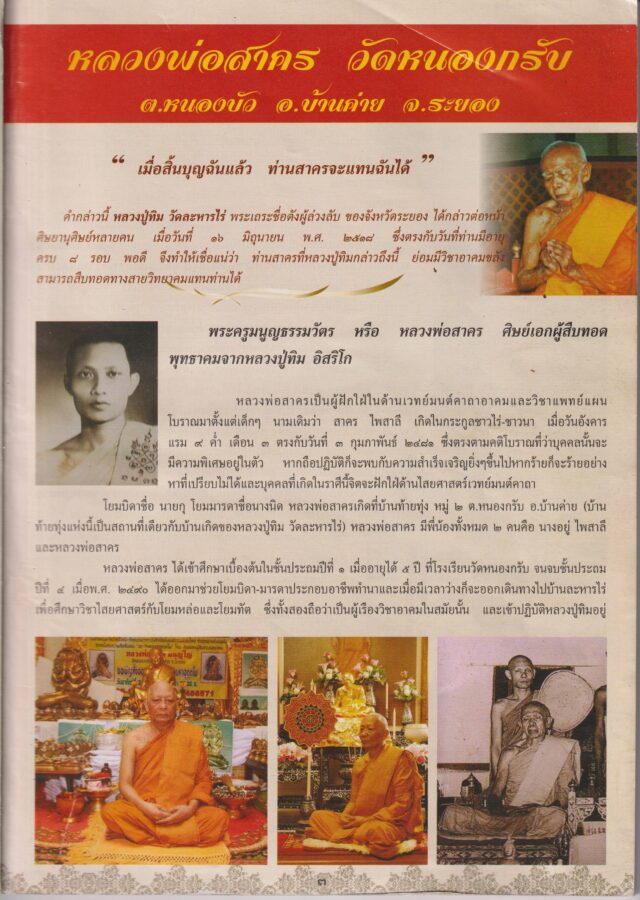
This document seeks to provide a comprehensive exegesis of the life and work of Lūang Phòr Sākorn. It will delve into the history of his temple, Wat Nong Gràp; chronicle his spiritual journey from a young seeker to a master of great repute; analyze the profound esoteric sciences he mastered; and present a detailed, chronological catalogue of his most significant and venerated amulets. It is an exploration of a legacy built on devotion, discipline, and the mastery of sacred power, a legacy that continues to resonate powerfully within the hearts of devotees across the world.
II. Wat Nong Gràp: The Seat of a Master
Before examining the life of its most famous abbot, it is essential to understand the history of Wat Nong Gràp, the institution that Lūang Phòr Sākorn would elevate to national prominence.
The history of Wat Nong Gràp is rooted in the faith of the local community in Rayong. While detailed records of its earliest foundation are sparse, it existed as a local monastic center for generations. The name “Nong Gràp” refers to the local geography, likely a marshland or pond area. Before Lūang Phòr Sākorn’s tenure, the temple was served by a succession of abbots who maintained its role as a spiritual heart of the community. One of the most significant preceding abbots was Lūang Phòr Phôeng (หลวงพ่อเพิ่ง), who was not only a respected administrator but also Lūang Phòr Sākorn’s first teacher in the sacred arts and his preceptor (Phra Upàtchā) upon ordination.
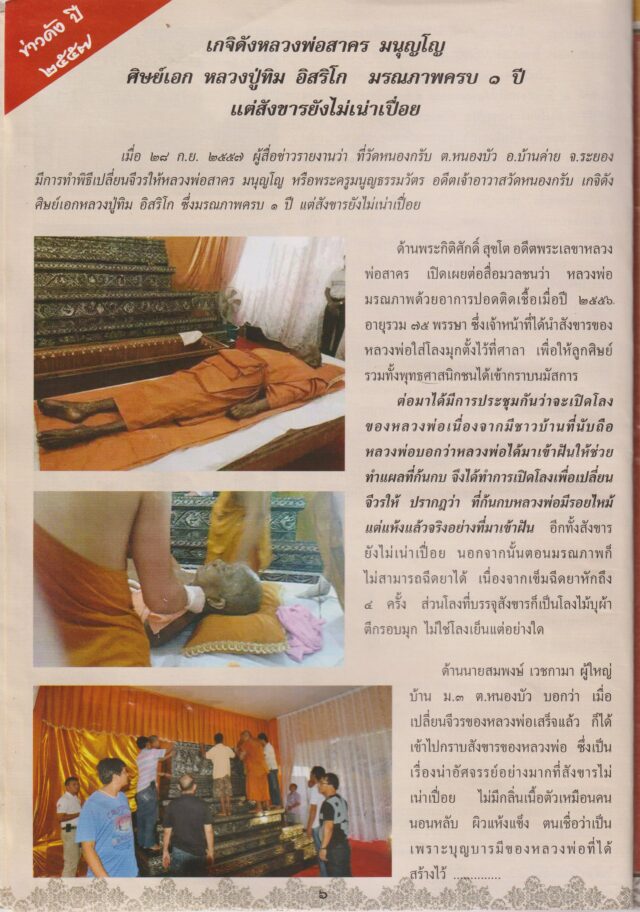
However, it was under the leadership of Lūang Phòr Sākorn, who became abbot in 2508 B.E. (1965 A.D.), that Wat Nong Gràp underwent a profound transformation. Using the funds raised from the creation of his now-famous amulets, he initiated numerous construction and renovation projects, including the main Uposatha (ordination hall), monk’s dwellings (kùtì), and, most notably, his visionary project: a three-story Yant Museum (พิพิธภัณฑ์ยันต์). This project was intended to preserve and display the sacred geometrical designs and incantations that form the basis of Thai Buddhist esoteric practice, many of which he had inherited from Lūang Pù Thim. His leadership turned Wat Nong Gràp from a local temple into a major center for pilgrimage, renowned as the home of the direct successor to the Wat Lahǎan Râi lineage.
III. The Spiritual Journey of Lūang Phòr Sākorn Manūññō
A. From Seeker to Monk (2481-2501 B.E.)
Born Sākorn Phaisālī on Tuesday, the 3rd of February, 2481 B.E. (1938 A.D.) in Bâan Khâai, Rayong, the young Sākorn displayed a precocious interest in the esoteric arts (Wichā Ākhom) and traditional herbal medicine from a very early age. His home was a mere 10 kilometers from Wat Lahǎan Râi, a proximity that would prove to be karmically significant. Even as a layman, he actively sought knowledge from local masters.
His spiritual calling crystallized, and on the 4th of June, 2501 B.E. (1958 A.D.), at the age of twenty, he was ordained as a Buddhist monk at his local temple, Wat Nong Gràp. His preceptor was the temple’s abbot, Lūang Phòr Phôeng. He was given the monastic name Manūññō (มนูญโญ), meaning “one who delights the mind.”

B. The Fateful Discipleship: Prime Apprentice of Lūang Pù Thim
Immediately following his ordination, in a move that would define his entire life, Lūang Phòr Sākorn was sent by his parents to Wat Lahǎan Râi to serve and study under Lūang Pù Thim Isarikō. Lūang Pù Thim, who was famously discerning and rarely accepted students, recognized in the young monk an unwavering determination and a profound capacity for spiritual practice. He accepted Lūang Phòr Sākorn as his personal apprentice.
For years, Lūang Phòr Sākorn dedicated himself to the rigorous training regimen set by his master. This involved not just the study of Dhamma and Vinaya but also the arduous practice of meditation and the memorization and inscription of countless yantras and kathā (incantations). Lūang Pù Thim transmitted his complete body of knowledge to Lūang Phòr Sākorn, holding nothing back. This included the most guarded and dangerous of his sciences: the Wichā Sâang Phǒng Phrāi Kumāan (วิชาสร้างผงพรายกุมาร), the method for creating the sacred Phrāi Kumāan powder. Lūang Pù Thim is said to have prophesied that Lūang Phòr Sākorn was the only one who could successfully inherit and continue his lineage, famously stating on June 16, 2518 B.E., “When my merit ends, Venerable Sākorn can replace me.” This declaration was a public anointment, cementing Lūang Phòr Sākorn’s status as the true heir.
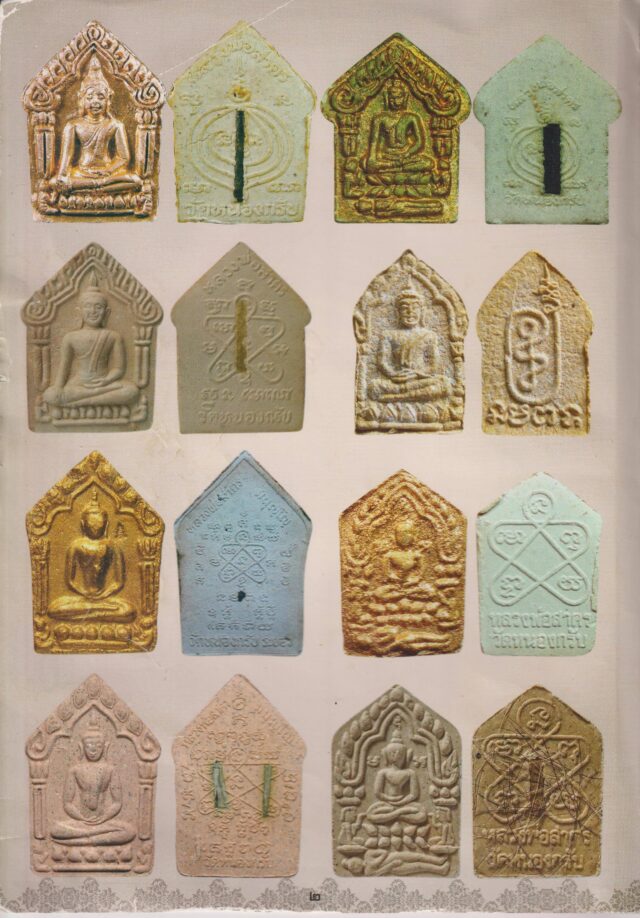
C. Broadening His Knowledge
While his foundation was firmly rooted in the teachings of Lūang Pù Thim, Lūang Phòr Sākorn’s thirst for knowledge led him to study with other great masters of the era, further enriching his spiritual arsenal. At Lūang Pù Thim’s own recommendation, he studied with Lūang Pù Hǐn of Wat Nong Sànǒm, a master of Ruesi traditions. His quest for knowledge also took him across borders, studying with adepts in Myanmar (in 2503 B.E.) and Cambodia (in 2518 B.E.). He also exchanged knowledge with many revered Thai masters, including Lūang Phòr Khoon Pàrísuttho of Wat Bâan Râi (in 2526 B.E.). This diverse education made him a singularly accomplished master of a wide spectrum of Buddhist esoteric arts.
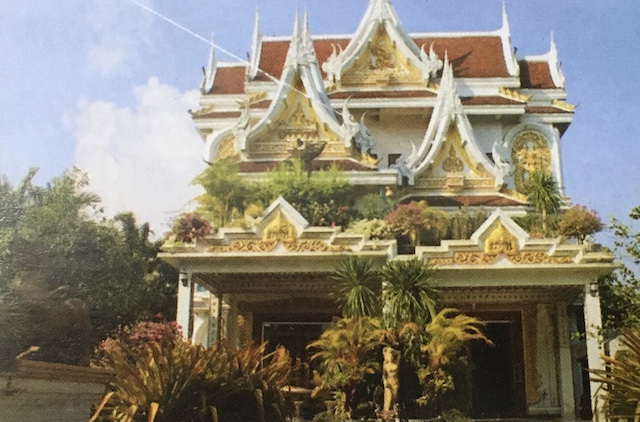
D. Abbotship and Enduring Legacy
In 2508 B.E., at the young age of 27, Lūang Phòr Sākorn was appointed the abbot of Wat Nong Gràp. Despite his new responsibilities, he never ceased his role as Lūang Pù Thim’s apprentice, visiting his master at Wat Lahǎan Râi almost daily to continue his studies and practice until Lūang Pù Thim’s passing in 2518 B.E. (1975 A.D.).
Lūang Phòr Sākorn passed away on the 18th of September, 2556 B.E. (2013 A.D.), at the age of 75. His passing was mourned by devotees across the nation. In a testament to his spiritual purity and attainment, his mortal remains did not decompose, a phenomenon known as having an indestructible body (สังขารไม่เน่าเปื่อย). This is considered by believers to be the ultimate proof of a monk’s high level of meditative achievement and spiritual power, serving as a final, miraculous confirmation of the sanctity of the amulets he consecrated during his lifetime.
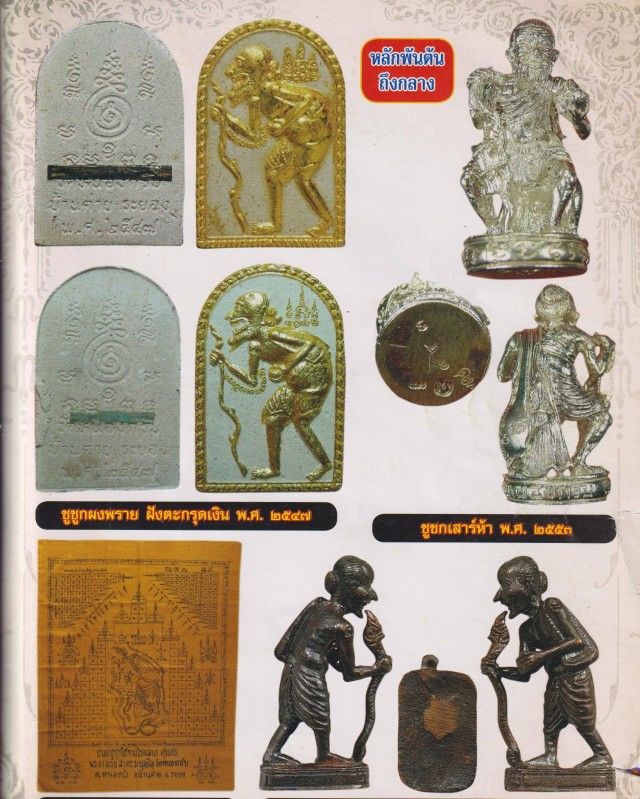
IV. The Esoteric Sciences (Wichā) of Lūang Phòr Sākorn
Lūang Phòr Sākorn’s mastery was multifaceted, but it was his inheritance of Lūang Pù Thim’s core sciences that defined his amulet-making.
A. Wichā Phǒng Phrāi Kumāan: The Science of Sacred Powder
This is the cornerstone of the Lūang Pù Thim-Lūang Phòr Sākorn lineage. Phǒng Phrāi Kumāan is not merely a mixture of sacred pollens or herbs; it is a potent necromantic substance created through a highly complex and dangerous ritual. The process, as transmitted by Lūang Pù Thim, involves sourcing the remains of a child who died in the womb (tāai thóng klom). Through specific rites and incantations, the spirit of the child is invited to assist in the creation of a powerful substance for generating merit. The physical matter is ritually purified and ground into a fine powder, which is then subjected to an intense period of solitary empowerment and consecration by the master.
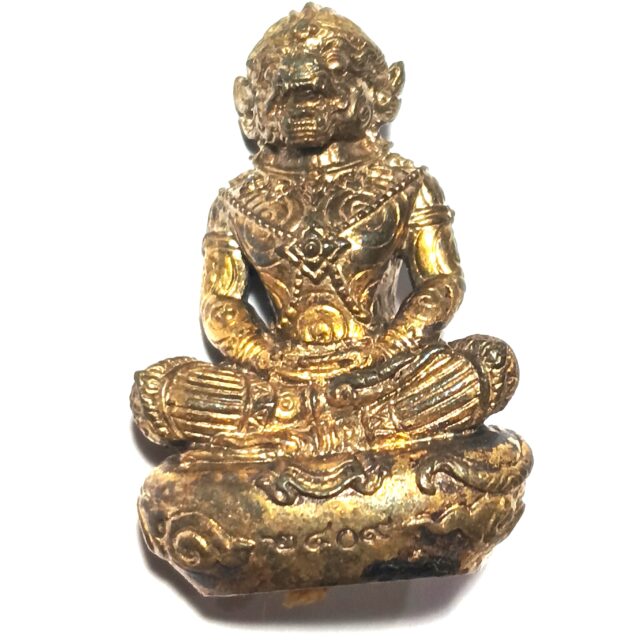
This Wichā is considered perilous because if the master lacks the requisite spiritual power (phálang jìt) to control the spirit, it can bring great misfortune. Lūang Phòr Sākorn himself was deeply respectful of this power and cautioned against its misuse, stating that only a master of Lūang Pù Thim’s caliber could truly control the energies involved. He inherited a significant quantity of Lūang Pù Thim’s original Phǒng Phrāi Kumāan and used it as the primary ingredient in his own powder-based amulets, ensuring a direct continuity of their legendary power.
B. The Pantheon of Amulets: A Chronological Catalogue
The following is a catalogue of the most significant and sought-after amulets created by Lūang Phòr Sākorn, organized by their year of creation.
The Early Period (Pre-2530 B.E.)
- Pra Pìdtā Mahā Lâap (พระปิดตา มหาลาภ) – 2524 B.E.: An early and highly regarded oval medallion featuring the “closing the eyes” Buddha. Known for bringing great fortune (mahā lâap) and success in trade, it is often simply called “Pìdtā 24.”
The Foundational Period: The First Great Editions (2530-2538 B.E.)
- Pra Khǔn Phǎen Phǒng Phrāi Kumāan Rûn Râek (พระขุนแผนผงพรายกุมาร รุ่นแรก) – 2530 B.E.: This is the legendary first edition that established Lūang Phòr Sākorn’s reputation as the true heir to Lūang Pù Thim. Created to raise funds for renovations at Wat Nong Gràp, these amulets were made with a high concentration of the original Phǒng Phrāi Kumāan inherited from his master.
- Pim (Molds): Released in both large (Pim Yài) and small (Pim Lék) molds.
- Versions: Included standard powder versions and special (Phím Phísèt) versions with embedded takrùt (inscribed scrolls) of gold, silver, or copper. The most sought-after are the Nûea Wâan Dòrk Thōrng (Golden Flower Herb substance).
- Reputed Power: Supreme in Mēttā Mahā Níyom (loving-kindness and popularity), Mahā Sànē (great charm), and Chôk Lâap (luck and fortune). Today, pristine examples command prices in the tens of thousands of baht.
- Rian Rûn Râek (เหรียญรุ่นแรก) – 2530 B.E.: The first edition medallion featuring his likeness.
- Sǐngha Rûn Râek (สิงห์รุ่นแรก) – 2535 B.E.: The first edition Lion (Sǐngha) amulet, inspired by a divine vision. Consecrated for five days and nights, it is revered for conferring spiritual authority (mahā àmnât), courage, and protection.
- Rian Sao Hà (เหรียญเสาร์ ๕) – 2536 B.E.: A sacred coin consecrated on an auspicious “Saturday the 5th,” a powerful astrological alignment. Renowned for its protective qualities (kláew klâat) and invulnerability (kong kraphan chātrī).
- Pra Khǔn Phǎen Rûn Sǭng (พระขุนแผน รุ่นสอง) – 2538 B.E.: The second official edition of his Khǔn Phǎen, created to celebrate the construction of a new chedi. It utilized the remaining Phǒng Phrāi Kumāan and other sacred powders, continuing the legacy of the first edition.
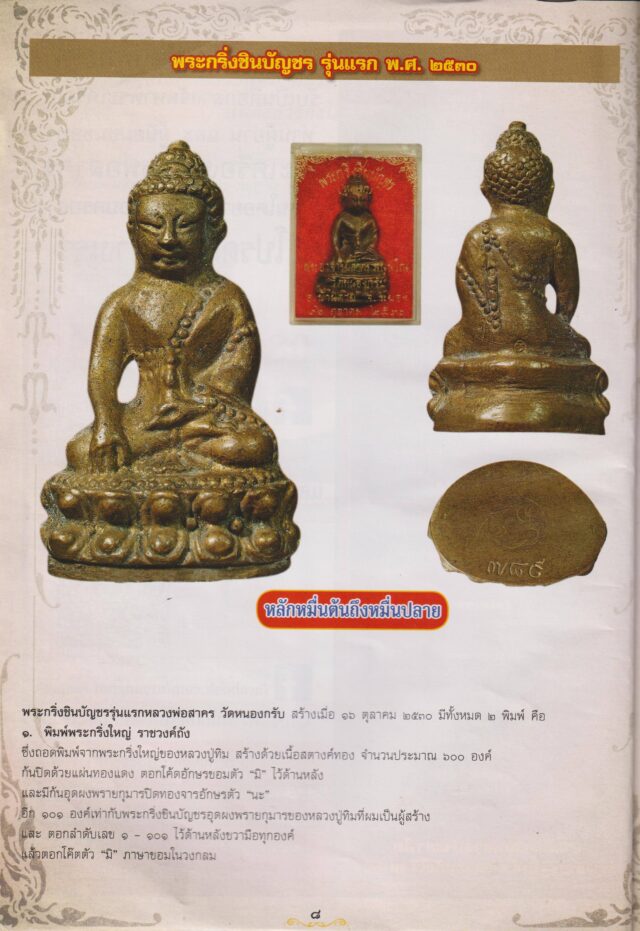
The Mature Period: Prolific Creation and Mastery (2540-2552 B.E.)
- Takrùt Mahā Pràap (ตะกรุดมหาปราบ) – 2540 B.E.: A powerful takrut associated with invincibility and overcoming all obstacles.
- Pra Pìdtā Mahā Lâap (พระปิดตา มหาลาภ) – 2540 B.E.: Another celebrated edition of his Pìdtā amulet, combining the esoteric sciences of both Lūang Pù Thim and Lūang Pù Hǐn.
- Mǔu Mahā Hěng (หมูมหาเฮง) – 2541 B.E.: A wild boar amulet, with “Mahā Hěng” signifying “great luck,” especially in financial matters.
- Pra Khǔn Phǎen Rûn Sǎam (พระขุนแผน รุ่นสาม) – 2543 B.E.: The third edition, released for his 63rd birthday. It included special committee (kammàkān) sets with Nawá Lōhá (nine sacred metals) takrut.
- Pra Krìng & Pra Chaiyáwát Chinábānchorn (พระกริ่งและพระชัยวัฒน์ชินบัญชร) – 2544 B.E.: A seminal and world-famous edition. The Pra Krìng (ringing Buddha) is one of the most revered forms of Thai amulets, believed to bestow healing and prosperity.
- Sacred Materials (Chanuan): Forged from a powerful alloy that included metal from older sacred amulets, including Lūang Pù Thim’s original Pra Krìng Chinábānchorn, and inscribed yantra plates.
- Special Features: Premium versions were filled with Phǒng Phrāi Kumāan and sacred hairs from Lūang Phòr Sākorn, Lūang Pù Thim, and other masters. They were consecrated for the entire three-month rains retreat (Traimâat).
- Sěua Cháná Sèuk (เสือชนะศึก) – 2545 B.E.: The “Tiger that Conquers Armies” model, created to bestow protection and courage upon military and police personnel.
- Pra Khǔn Phǎen Phâapàa Sámákkhī (พระขุนแผนผ้าป่าสามัคคี) – 2546 B.E.: A special edition for a temple fundraising ceremony, featuring unique compositions like pink powder and lacquered white powder with embedded silver takrut. Famous for its protective power.
- Sǐngha Mahā Pràap Mângmī Sīisùk (สิงห์มหาปราบ มั่งมีศรีสุข) – 2546 B.E.: A small but powerful lion amulet for leadership, affluence, and happiness.
- Phâa Yan Mahā Sètthī (ผ้ายันต์มหาเศรษฐี) – 2547 B.E.: The “Great Millionaire” talismanic cloth, created to help devotees recover from economic hardship.
- Pra Khǔn Phǎen Sáp Phôem (พระขุนแผน ทรัพย์เพิ่ม) – 2548 B.E.: The “Wealth Increasing” model, consecrated for nine days and nights to specifically boost financial fortune.
- Payā Tào Ruean Ruai Than Jai (พญาเต่าเรือน รวยทันใจ) – 2549 B.E.: The “Instant Wealth” Tortoise amulet, another creation inspired by a divine vision of abundance.
- Takrùt Tōn Sao Hà (ตะกรุดโทนเสาร์ ๕) – 2550 B.E.: Another powerful “Saturday the 5th” takrut, focused on protection and charm.
- Rian Charoen Phon (เหรียญเจริญพร) – 2550 B.E.: The “Blessing for Prosperity” sacred bell amulet, one of the most celebrated models from his later years, consecrated by over 108 monks.
- The 2552 B.E. “Birthday Celebration” Series: A significant year marking his 71st birthday, featuring a host of important amulets all consecrated in a powerful nine-day solo empowerment ritual.
- Rian Hùang Chûeam (เหรียญห่วงเชื่อม): A classic “welded loop” medallion in numerous materials.
- Pra Chaiyáwát Chinábānchorn (พระชัยวัฒน์ชินบัญชร): A smaller version accompanying the larger Pra Krìng.
- Lûuk Om Phǒng Phrāi Kumāan (ลูกอมผงพรายกุมาร): Sacred powder balls, a continuation of his master’s tradition.
- Rian H̄lòr Jâo Sŭa Būraphā (เหรียญหล่อเจ้าสัวบูรพา): A cast “Eastern Tycoon” amulet, focused on wealth and prosperity, created in a limited edition of 5,000 copper pieces.
- Hanumān Rûn Mahā Pràap (หนุมาน รุ่นมหาปราบ): The “Great Conqueror” Hanumān amulet.
The Final Period: The Pinnacle of Legacy (2553-2556 B.E.)
- Rian Bāràmī 53 (เหรียญบารมี ๕๓) – 2553 B.E.: The “Perfections of 2553” medallion, an oval coin blessed in a grand ceremony. The 99 gold versions are among his rarest medallions.
- Chū Chók Rûn Jâo Sàp (ชูชกรุ่นเจ้าทรัพย์) – 2553 B.E.: The “Master of Treasures” edition of the Jūjaka beggar, a deity known for infallible begging and receiving gifts.
- Rian Mahā Phōkkhasàp (เหรียญมหาโภคทรัพย์) – 2554 B.E.: The “Great Treasures” medallion for his 73rd birthday, featuring an “unending wealth” yantra.
- The Traimâat 2555 Series (รุ่นไตรมาส ๒๕๕๕): A final, major series of amulets consecrated during the last full rains retreat of his life. It included various Khǔn Phǎen, medallions, and other forms, many containing his hair.
- Hanumān Mahā Pràap Trai Chàk (หนุมาน มหาปราบ ไตรจักร) – 2555 B.E.: A limited edition Hanumān (333 sets) empowered for nine days and nights, incorporating powders and yantras from 16 different Hanumān traditions.
V. Conclusion: An Enduring Legacy of Faith and Power
The life and work of Lūang Phòr Sākorn Manūññō represent a critical chapter in the history of Thai Buddhist esoteric practice. As the chosen successor to Lūang Pù Thim, he served as the custodian of a sacred and powerful lineage, ensuring its continuation with integrity and unwavering devotion. His amulets are far more than collectible artifacts; they are tangible links to a profound spiritual heritage, imbued with the compassionate intent and formidable spiritual power of two of Thailand’s most revered masters.
From his legendary Pra Khǔn Phǎen Phǒng Phrāi Kumāan to his powerful Pra Krìng Chinábānchorn and his myriad of other sacred creations, each object tells a story of meticulous ritual, pure intention, and proven efficacy. The ever-increasing veneration for his amulets, coupled with the miraculous phenomenon of his incorruptible remains, solidifies his status as a true master. For devotees and students of the sacred arts, the pantheon of Lūang Phòr Sākorn’s amulets remains a profound source of blessing, protection, and a timeless testament to a life dedicated to the Dhamma and the service of others.
